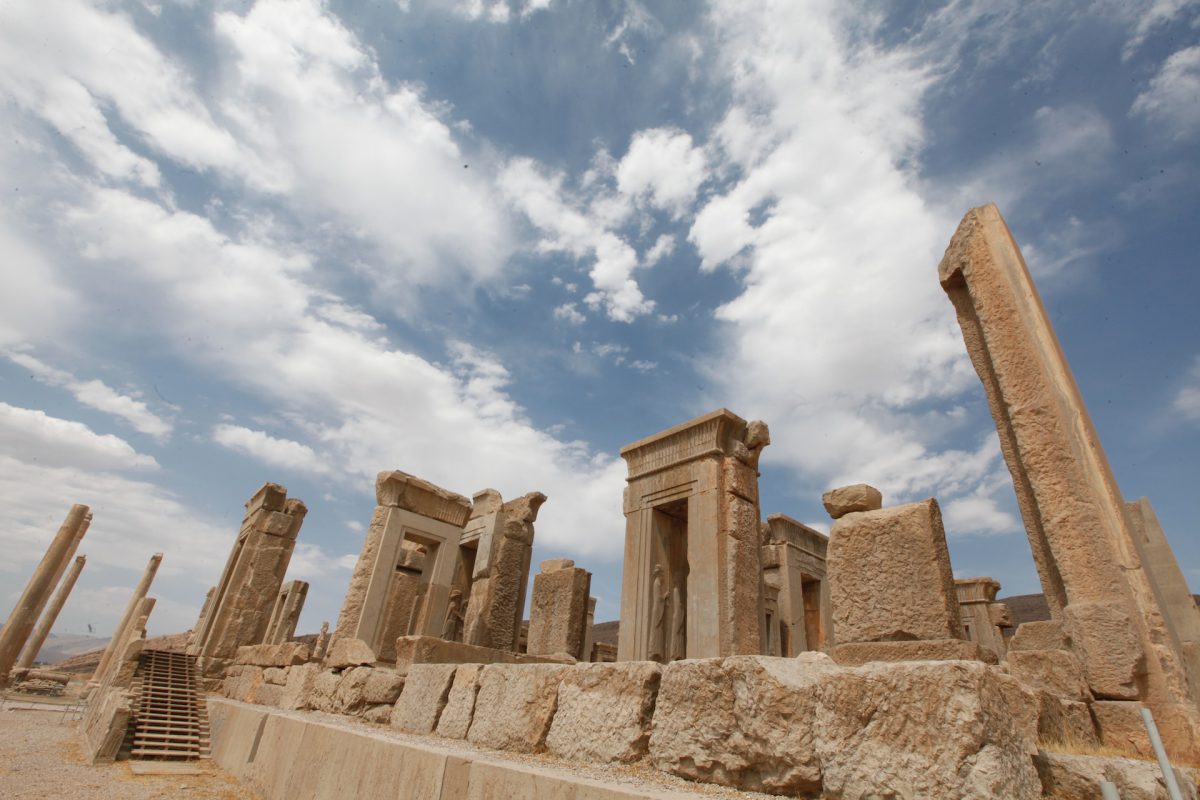Table of Contents
Historic Sites in Iran are a real pleasure to visit! Iranian architecture helps the rich history of this country and together they evoke a utopia from the rich culture of the Persians. Ornamental tiles and clever engineering masterpieces show the power of Iranian architecture for centuries. Having 22 UNESCO World Heritage Sites here, you will never face a shortage of historic sites in Iran.
When it comes to historic places, We have the city with the most historic sites in Iran. Isfahan, often referred to as the “Half of the World,” with its stunning Naqsh-e Jahan Square and elegant bridges, showcases Persian craftsmanship at its finest. Shiraz, the city of poets and gardens, beckons with the grandeur of Persepolis and the serenity of Hafez’s tomb. Kashan is famous for its remarkable architecture and traditional houses. Join us on a captivating journey through Iran historical places list:
Khajoo Bridge and Si-o-Se Pol Bridge, Isfahan
Khajoo Bridge is one of the top Iran historical places was built during the Safavid period, which was built on the Zayandehrud River in Isfahan by the order of Shah Abbas II. The architectural, tiling, and painting style of Khajoo Bridge is a world masterpiece that attracts all viewers. Khajoo Bridge is 133 meters long and 12 meters wide. Khajoo Bridge is adjacent to Zayandehrud River by stairs o one side.
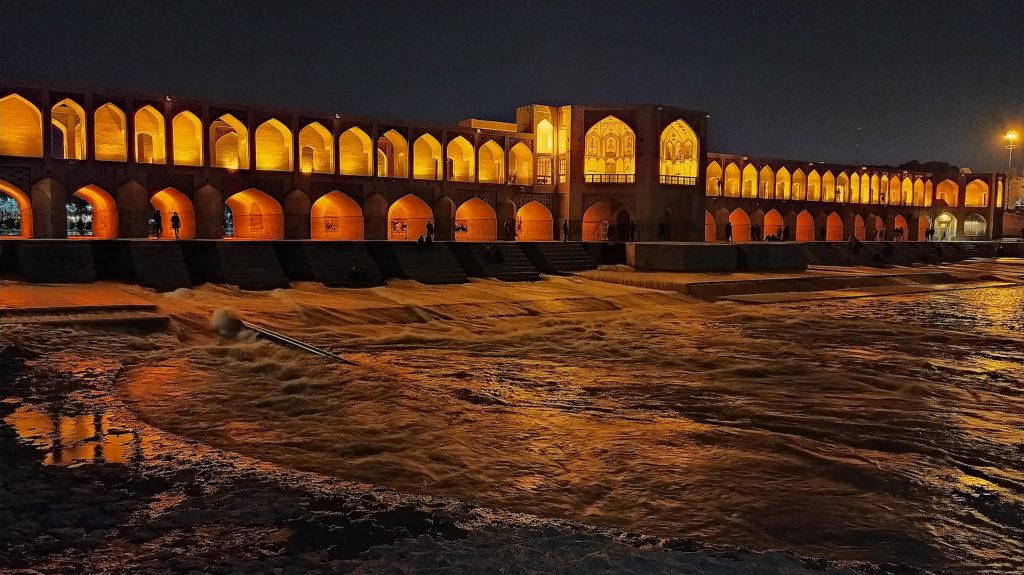
This Bridge has been designed in such a way that it has the ability to control the flow of water, especially since this bridge was also a kind of dam in the past. This control of the water occurred by opening and closing the valve for which it was made. When the dam gates were closed, the water behind the dam was higher, so it could be used to irrigate gardens and fields.
Si-o-Se Pol bridge is another bridge over the Zayandehrud River in Isfahan, which has 33 openings, 295 meters long, and 14 meters wide. This bridge is a unique masterpiece of the reign of Shah Abbas I. Despite the fact that the bridges are built in low cross-sections, the widest part of the Zayandeh River has been chosen to build this bridge, because this part of the river is located in a wide and calm shallow part and has a spectacular view.
Naqsh-e Jahan Square, Isfahan
This square, which is one of the largest and most famous squares in the world, is located in the center of Isfahan and is one of the top Iran historical places. Before the Safavid dynasty chose Isfahan as its capital, there was a large garden called Naghsh Jahan in Naghsh-e Jahan Square, inside which there were many government buildings and palaces. When Shah Abbas reached the throne, he enlarged the square. According to various sources, the current structure of Naghsh Jahan Square was built during the reign of Shah Abbas I, the Safavid.
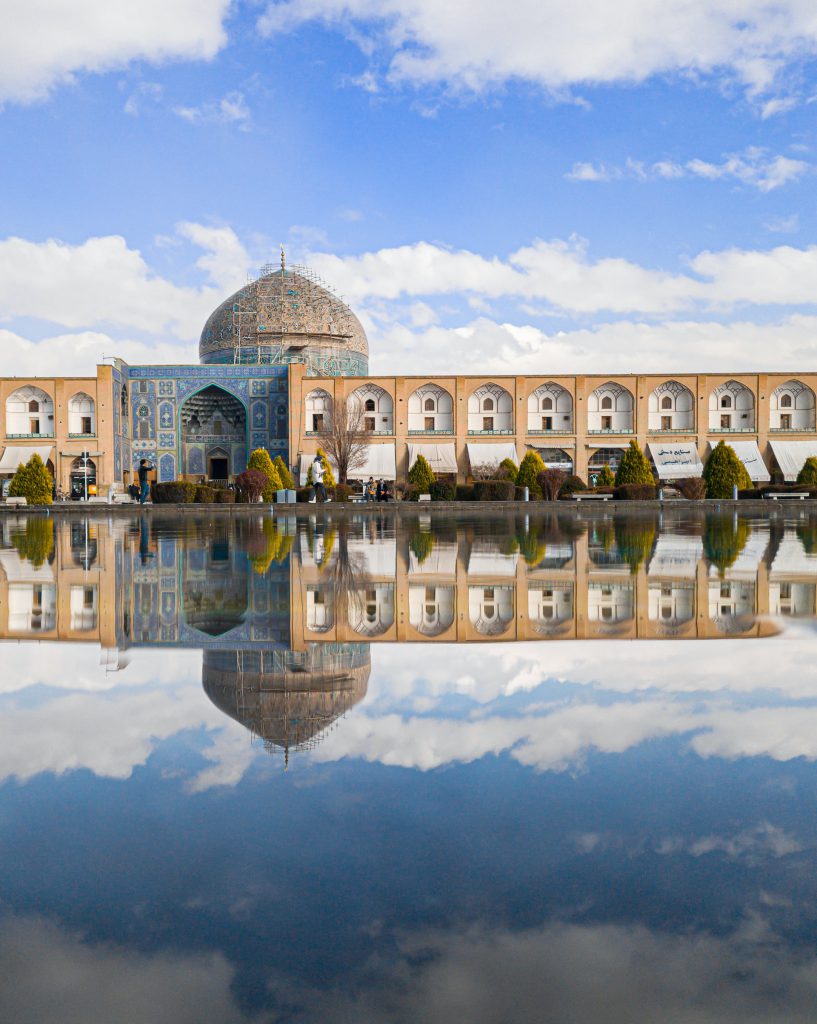
Shah Abbas chose this square as the central core of Isfahan and around it, he placed the Aali Qapo Palace as the center of government, the Sheikh Lotfollah Mosque as the religious center, the bazaars as the economic center, and the Shah Mosque as the social center.
Also, In case you are wondering to visit this top historical attraction in Iran, here are Iran tours that consist of Isfahan.
Historical bath of Sultan Amir Ahmad, Kashan
The architecture and decorations used in the bath of Sultan Amir Ahmad have made it a valuable piece of art and one of the top historical attractions in Iran. This bath was built during the Seljuk period, but its entrance belongs to the Qajar period, and according to some, the bath was built on the ruins of the previous bath and a small bath was attached to it.
What makes this bathroom so attractive and spectacular is the interesting architecture, golden and blue tiles as well as skillful plastering. To all these attractions, arched ceilings, murals, and colorful glass have been added, which has turned it into a masterpiece.
Sialk Archaeological Hills, Kashan
Tepe Sialk or Silk Archeological Hills in Kashan has a long history. About 5,000 years ago, cave dwellers living on the Iranian plateau decided to go to the plains due to the changing ecosystems and climatic conditions. Because the conditions in the plains were better because of the farm. They did so and turned to the plains forever, and then little by little the age of progress began. Archaeologists have done a lot of digging in this regard and have come to the conclusion that the oldest people in the plains were in fact the same people who lived in a place called Sialk near Kashan. Their history dates back to 7,000 years ago.
The Sialk Hills were actually places of worship for ancient people and, like many other religious structures at the time, had a pyramidal shape, made of clay and pottery. You should know that even a century ago, no one knew about the existence of such a great civilization, until about 80 years ago, after a flood that occurred in the agricultural lands of Kashan, this historical region was discovered. That’s why it is among the top historical attractions in Iran.
Historical Houses in Kashan
The beautiful city of Kashan is one of the most historic cities in Iran, which has a special reputation for having large, beautiful, and old houses. These houses represent the unique and valuable Iranian architecture that has preserved its historical identity over time. The top 3 historical houses of Kashan include the Tabatabai House, the Boroujerdi House, and the Abbasid House.
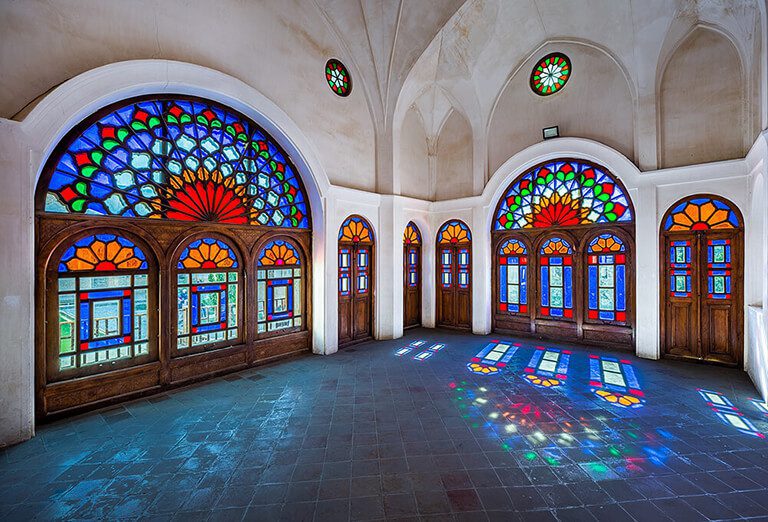
Also, In case you are wondering to visit these and other attractions in Kashan, here are Iran tours that consist of Kashan.
Persepolis (Takht-e Jamshid), Shiraz
Persepolis is a symbol of glory in ancient Iran and without a doubt one of the top Iran historical places. Perhaps the region of Persepolis and the remaining buildings in it can be considered one of the most important documents in the history of civilization in the world. Hence, prominent scientists and archaeologists from all over the world have traveled to Iran to visit Persepolis. Considering the greatness of the Achaemenid Empire in ancient Iran, which covered a significant part of the eastern part of the world, one can understand the glory of the headquarters of these kings in Persepolis.
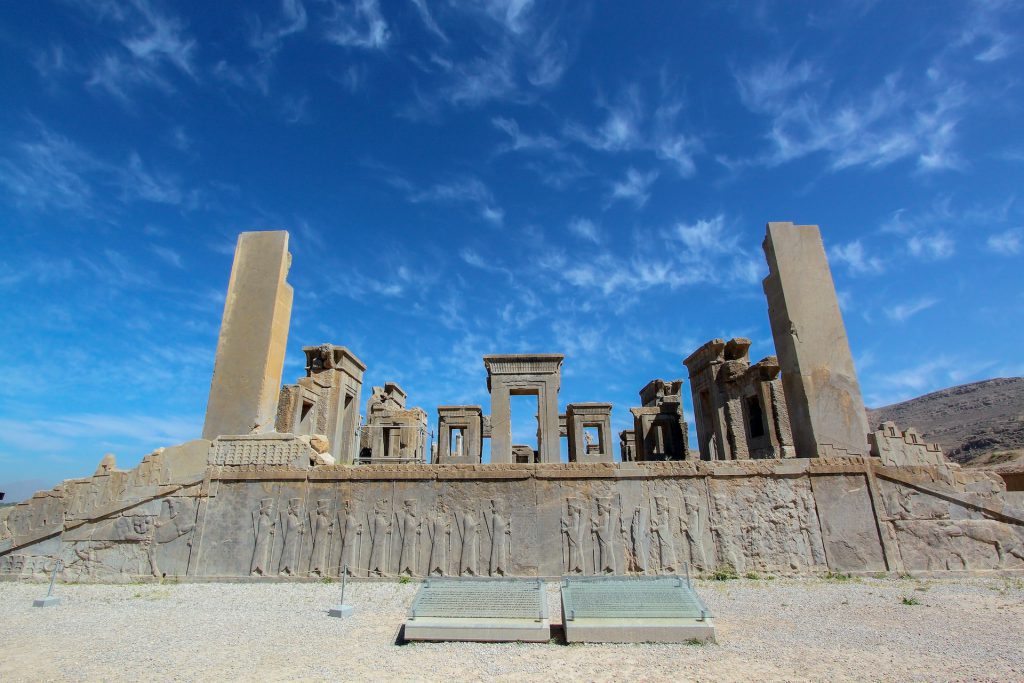
What attracts the attention of the world to Persepolis is not only the historical antiquity of this ancient city, and archaeologists have discovered the development of civilization in ancient Iran through careful study of inscriptions and artifacts from this region. The social laws of the Achaemenid period have also surprised many historians.
Pasargadae, Shiraz
The tomb of Cyrus the Great is in Shiraz. The founder of the Achaemenid dynasty in 546 BC, built as its capital and called it Pasargadae. The general architectural form of the tomb consists of platforms on which the main building is located. The tomb of Cyrus was built before his death by his own order, which was considered sacred in all Achaemenid periods and was well preserved. The tomb of Cyrus the Great with its palaces and halls is among one of the top historical attractions in Iran.
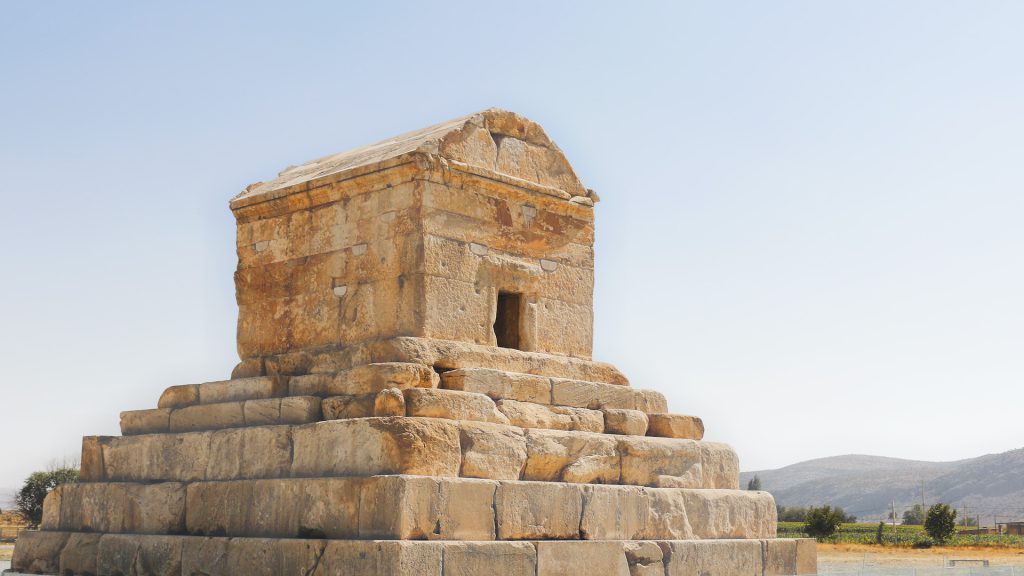
Also, In case you are wondering to visit this and many other attractions, here are Iran tours that consist of Shiraz and Fars.
Bisotun Inscription, Kermanshah
Bisotun historical site is one of the most important and top Iran historical places, and the inscriptions of Darius have been registered by UNESCO. Inside the historic site of Bisotun, there are valuable artifacts from prehistoric Iran to the Islamic era.
Works such as the World Inscription of Darius the Great, the statue of Hercules, the remains of the Sassanid dam and bridge, the Bisotun mirage, patriarchal buildings, Safavid buildings, ancient caves, the relief of Goodarz II and Shah Abbasi Inn, which together are one of the richest and most prestigious historical sites in the world. Perhaps the reason for the accumulation of so many works from different historical periods in one place is the great sanctity that Mount Bisotun has had among the Iranian ancestors for many years.
ChoghaZanbil Ziggurat, Khuzestan
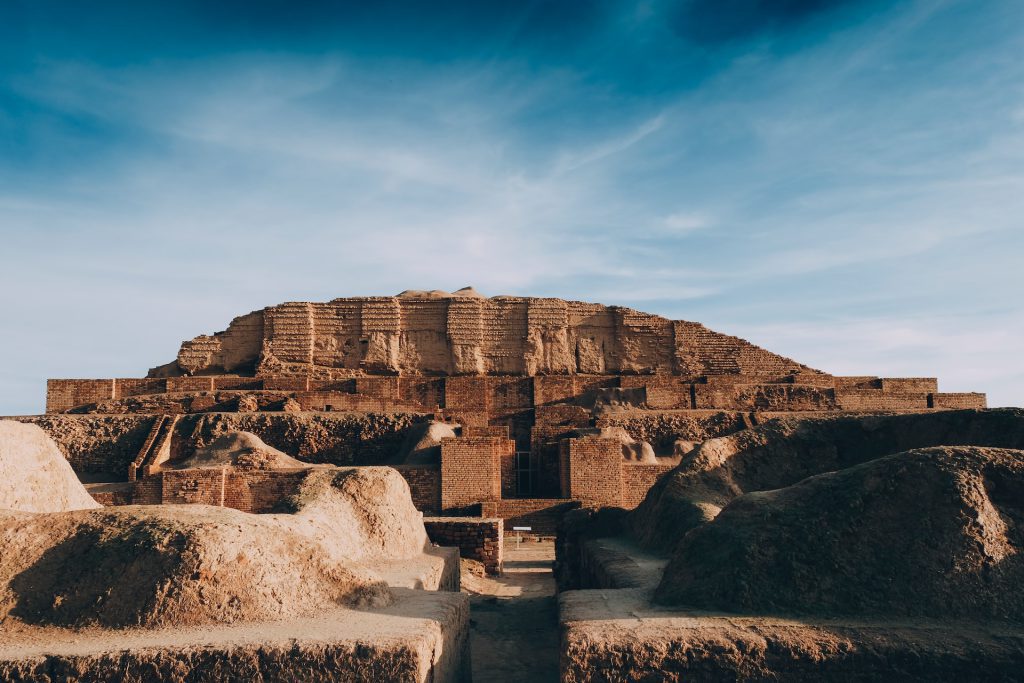
One of the most famous historic sites in Iran is ChoghaZanbil Ziggurat. The construction of the Choghazanbil historical site, which began around 1250 BC during the Elamite period, remained unfinished after the Assyrian invasion. The thousands of unused bricks left in the area are a testament to this. In 1979, Choghazanbil was the first historical monument from Iran to be inscribed on the UNESCO World Heritage List.
The international community values it exceptionally and universally. Orientalists consider Choghazanbil to be the first religious building in Iran. This temple is also the largest architectural remnant of the Elamite civilization known to date. Being the first and the largest structure in the history of Iran is a good testament to why it’s among the top historical attractions in Iran.
Tabriz Grand Bazaar
Tabriz Bazaar is one of the largest indoor markets in the world and one of the masterpieces of Iranian architecture and easily is one of the top Iran historical places. The original foundation of the historical bazaar of Tabriz dates back to the beginning of Islam, which is evidenced by the location of the Grand Mosque in the vicinity of the bazaar. Also, the passage of the Silk Road through the city and the bazaar of Tabriz proves the importance of the issue.
High arches and domes, interconnected brick structures, the arrangement of shops, the multiplicity of temples, and a large number of schools and mosques located next to the commercial buildings, have left this bazaar as an excellent example of Islamic and Oriental business and living environment. Also, In case you are wondering to visit this and many other attractions, here are Iran tours that consist of Tabriz.
FAQs about Iran Historical Places
Q1: What Iran is famous for?
A1: Iran is famous for its abundant cultural history in diverse art forms like literature and architecture. The country boasts numerous impressive structures, including royal palaces, ancient mosques, and historical museums.
Q2: What are the must-visit Iran historical places?
A2: Some of the must-visit historical attractions in Iran include Naqsh-e Jahan Square, Sialk Archaeological Hills, Historical Houses, Persepolis, Pasargadae, ChoghaZanbil Ziggurat, Grand Bazaar of Tabriz.
Q3: What is the most historical place in Iran?
A3: One of the most famous historical places in Iran is Persepolis, known for its grand and beautiful ancient ruins.
Q4: What is an interesting historic place in Iran?
A4: Persepolis is likely the most well-known spot in Iran that people worldwide recognize. It’s also a major reason why many visit Iran. Situated about 60 kilometers from Shiraz and built in 520 BC, Persepolis used to be the splendid ceremonial capital of the Persian empire.
Q5: What are two historical sites in Iran?
A5: Two historical sites in Iran are Persepolis in Shiraz and the Golestan Palace in Tehran.
Q6: What is Iran’s most famous landmark?
A6: The Shah Mosque in Isfahan is a highly renowned landmark in Iran and one of the most exquisite religious centers in the Middle East. It is celebrated for its exceptionally distinctive Persian architecture and intricate decorations. Exploring the design intricacies alone can fill up your afternoon with fascination.
Q7: What are some famous UNESCO World Heritage Sites in Iran known for their historical significance?
A7: Some famous UNESCO World Heritage Sites in Iran known for their historical significance include Persepolis, Naghsh-e Jahan Square in Isfahan, Bam and its Cultural Landscape, and the historical city of Yazd.
Q8: How can travelers make the most of their visit to Iran historical places?
A8: Travelers can make the most of their visit to Iran historical places by hiring knowledgeable local guides, immersing themselves in the local culture, and taking their time to appreciate the intricate details of each site.
Q9: Are there any guided tours available specifically focused on Iran historical places?
A9: Yes, there are guided tours available that specifically focus on Iran historical places. Many tour operators offer specialized itineraries to explore the historical wonders of Iran.
Q10: Which historical sites in Iran offer the best opportunities for photography enthusiasts?
A10: Historical sites such as Nasir al-Mulk Mosque in Shiraz, the windcatchers of Yazd, the ancient village of Abyaneh, and the intricate tile work of Isfahan’s mosques offer great opportunities for photography enthusiasts.
Q11: What are some architectural wonders from ancient Persia that can still be visited in Iran?
A11: Some architectural wonders from ancient Persia that can still be visited in Iran include the ruins of Persepolis, Pasargadae (Cyrus the Great Tomb), and the ancient city of Susa.
Q12: How long would it take to visit the top Iran historical places?
A12: The duration of visiting the top Iran historical places depends on the traveler’s itinerary and the sites they choose to explore. Generally, allowing at least 10 to 14 days would provide a good amount of time to visit the major historical attractions.
Q13: Are there any preserved ancient cities or ruins in Iran that showcase its historical past?
A13: Yes, there are preserved ancient cities and ruins in Iran that showcase its historical past, such as the ancient city of Persepolis, the ruins of the Parthian city of Hatra, and the mud-brick city of Rayen.
Q14: How accessible are Iran historical places for travelers with mobility challenges?
A14: Accessibility may vary across different Iran historical places. While some sites may have certain accessibility challenges, others, like Persepolis and some mosques, offer relatively better accessibility for travelers with mobility challenges.
Q15: Are there any historical attractions in Iran that offer interactive experiences or reenactments?
A15: While interactive experiences and reenactments may not be commonly available at historical attractions in Iran, some sites like Golestan Palace in Tehran may occasionally offer cultural performances and exhibitions.
Q16: What are some Iran historical places that are off the beaten path but worth exploring?
A16: Some off-the-beaten-path historical attractions in Iran worth exploring are the ancient city of Susa, the Tabriz Historic Bazaar Complex, Shahr-e-Sukhteh (The Burnt City), and the stunning village of Kandovan.
Q17: Are there any historical attractions in Iran that are best explored during specific seasons?
A17: Some historical attractions in Iran are best explored during specific seasons. For example, the cities of Isfahan and Shiraz are particularly enchanting in spring when the gardens are in full bloom. However, most historical sites can be visited year-round.
Explore Iran Historical Places with a Customized Tour
If you’re yearning to explore Iran historical places, there’s no better way to do so than by embarking on a journey tailored to your specific interests and preferences. To Iran Tour is your gateway to exceptional Iran tours and travel packages.
We specialize in crafting customized tours that cater to your unique preferences, ensuring an unforgettable experience that resonates with your personal interests. With our meticulously designed itineraries, we offer you the opportunity to witness the marvels of Iran historical places.
Trust To Iran Tour to design a travel plan that suits your preferences.

